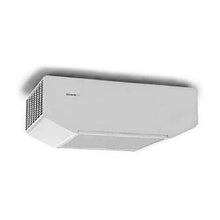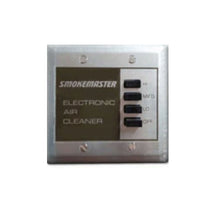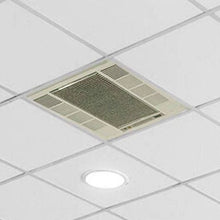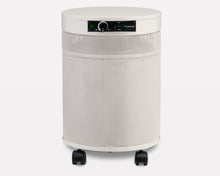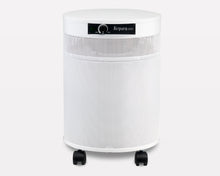How to Eliminate Cannabis Growing Odors: Air Filtration vs. Air Purification Explained
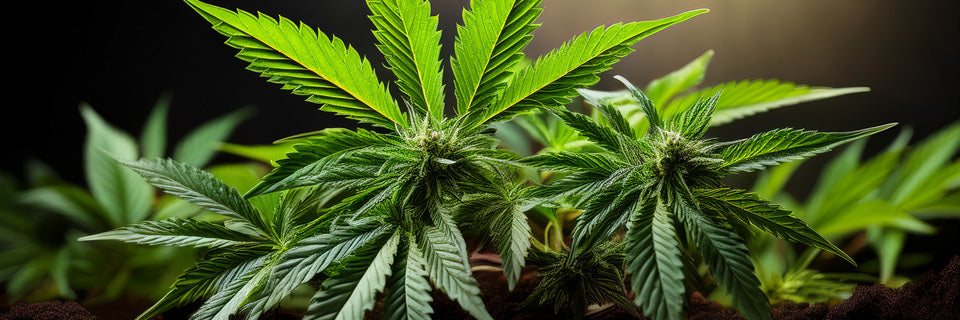
Understanding the critical difference between moving air out and actually cleaning it could save you from costly compliance issues and neighbor complaints.
If you're cultivating cannabis at home—whether for medical purposes or in states where it's legal—you've likely discovered that managing odor isn't just about courtesy to neighbors. It's about maintaining your privacy, staying compliant with local regulations, and creating a comfortable living environment. The distinctive aroma of growing cannabis can travel much further than most people realize, and simply exhausting air outside often makes the problem worse, not better.
The key lies in understanding a fundamental distinction that many home growers miss: there's a world of difference between moving smelly air out of your space and actually purifying that air so odors don't escape in the first place. This comprehensive guide will help you understand both approaches, their scientific foundations, and how to implement effective odor control strategies that actually work.
The Science Behind Cannabis Odors: Why They're So Persistent
Cannabis plants produce their characteristic smell through volatile organic compounds (VOCs), specifically terpenes like myrcene, limonene, and pinene. These molecular compounds are incredibly small—measured in fractions of microns—and behave differently than the particles we typically associate with air filtration.
Research conducted by the Colorado Department of Public Health and Environment found that cannabis cultivation facilities can significantly impact local ozone concentrations due to VOC emissions. A 2019 Denver study revealed that even well-ventilated facilities were contributing measurable amounts of terpenes to the outdoor environment, demonstrating that traditional ventilation alone isn't sufficient for complete odor control.
The challenge becomes even more complex when you consider that terpenes are designed by nature to be volatile—they evaporate easily and travel through air currents. Unlike dust or pollen, which eventually settle, terpene molecules remain airborne for extended periods and can penetrate fabrics, walls, and ventilation systems throughout your home.
What makes cannabis odors particularly problematic is their detection threshold. The human nose can detect certain terpenes at concentrations as low as parts per billion, meaning even trace amounts that escape your growing area can be noticeable to neighbors or visitors. This sensitivity explains why many home growers are surprised when their "sealed" growing setup still produces detectable odors elsewhere in the house.
Air Exhaustion vs. Air Purification: The Critical Difference
The Exhaust Fan Approach: Moving the Problem
Most new growers start with the logical assumption that removing smelly air from the growing space will solve their odor problems. This approach typically involves installing powerful exhaust fans that pull air from the grow room and vent it outside through ducts or windows.
While exhaust systems do remove odorous air from your immediate growing area, they don't eliminate the odor molecules themselves. Instead, they relocate these compounds to the outdoor environment around your home. According to the Colorado Department of Public Health and Environment Air Pollution Control Division, simple ventilation without treatment is insufficient for controlling VOC emissions from cannabis cultivation.
The problems with exhaust-only approaches include:
Neighborhood Impact: Your carefully exhausted air doesn't disappear—it carries concentrated terpenes directly to your yard, neighboring properties, and potentially into other buildings through their ventilation systems.
Weather Dependency: Wind patterns, humidity, and temperature inversions can cause exhausted odors to linger or drift back toward your home, creating unpredictable odor problems.
Regulatory Compliance: Many jurisdictions with legal cannabis cultivation explicitly require odor control measures that prevent detection beyond property boundaries—something exhaust fans alone cannot guarantee.
Energy Inefficiency: Constantly exhausting conditioned air from your home wastes energy on heating and cooling, while drawing unconditioned outdoor air inside.
True Air Purification: Eliminating Odors at the Source
Air purification takes a fundamentally different approach by actually breaking down or capturing odor molecules before they can escape your growing area. This method treats the air rather than simply moving it, addressing the root cause of odor problems.
The most effective air purification for cannabis odors relies on activated carbon filtration. Carbon filtration is currently recognized as the best control technology for reducing VOC emissions from cannabis cultivation facilities. Unlike simple ventilation, activated carbon actually adsorbs (not just absorbs) terpene molecules onto its massive surface area.
High-quality activated carbon filters work through a process called adsorption, where terpene molecules become trapped in the microscopic pores of the carbon material. A single gram of activated carbon can have a surface area exceeding 500 square meters, providing enormous capacity for capturing volatile organic compounds.
The Technology Behind Effective Cannabis Odor Control
Understanding HEPA vs. Carbon Filtration
Many people assume that HEPA (High-Efficiency Particulate Air) filters, which are excellent for removing particles, will also handle odors. However, research consistently shows this isn't the case. HEPA filters capture particles as small as 0.3 microns with 99.97% efficiency, but they cannot remove VOCs, which require activated carbon filtration instead.
Terpenes and other odor molecules are gases, not particles, and they pass right through HEPA filter media. Studies comparing different filtration methods found that HEPA filters were ineffective at reducing toluene (a common VOC), while charcoal filters demonstrated the fastest reduction rates.
This distinction is crucial for cannabis growers because it means you need specific technology designed for gas-phase filtration, not just high-efficiency particle removal.
Activated Carbon: The Gold Standard for VOC Removal
Activated carbon works through a combination of physical adsorption and chemical bonding. The activation process creates an enormous internal surface area riddled with micropores perfectly sized to trap organic molecules. When terpene-laden air passes through activated carbon, these odor molecules become chemically bound to the carbon surface.
The effectiveness of carbon filtration depends on several factors:
Contact Time: Air must remain in contact with the carbon long enough for adsorption to occur. This is why quality cannabis air filters are designed with specific airflow rates that balance filtration efficiency with air circulation needs.
Carbon Quality: Not all activated carbon is created equal. Coconut shell-based activated carbon typically performs better for VOC removal than coal-based alternatives due to its pore structure and surface chemistry.
Bed Depth: Thicker carbon beds provide more contact time and adsorption capacity, explaining why professional-grade cannabis air filters often contain several pounds of activated carbon.
Pre-filtration: Combining HEPA pre-filters with carbon beds protects the carbon from particulate contamination while addressing both particle and gas-phase pollutants.
Implementing Effective Odor Control Systems
Sizing Your Air Purification System
Proper sizing is critical for effective cannabis odor control. The general rule is to achieve complete air exchanges every 5-10 minutes in your growing space, but this must be balanced with the contact time needed for carbon adsorption.
Calculate your space volume (length × width × height) and look for air purifiers rated to handle at least 6-12 air changes per hour. For a 4×4×8-foot grow tent, this means processing 128-256 cubic feet per minute (CFM) of air through your carbon filter system.
Professional cannabis facilities often use multiple smaller units rather than one large system to ensure even air distribution and provide redundancy. This approach also allows for better maintenance scheduling without shutting down odor control entirely.
Proper Installation and Maintenance
Even the best carbon filtration system won't work effectively if improperly installed or maintained. Key considerations include:
Airflow Direction: Most carbon filters are designed for specific airflow patterns. Installing them backwards or in turbulent airflow areas reduces efficiency dramatically.
Seal Integrity: Any air leaks around your filtration system allow untreated air to escape, compromising overall odor control. Use proper ducting connections and seal all joints.
Filter Replacement: Activated carbon becomes saturated over time and loses effectiveness. Quality cannabis-specific filters typically need replacement every 12-18 months depending on usage intensity.
Pre-filter Maintenance: If your system includes HEPA pre-filters, clean or replace them regularly to prevent airflow restriction that reduces overall system performance.
Combining Approaches for Maximum Effectiveness
The most effective cannabis odor control systems often combine purification with controlled exhaust. This hybrid approach purifies the air first through carbon filtration, then exhausts the cleaned air outside. Testing has shown that high-powered air purifiers fitted with HEPA filters and activated charcoal filters can effectively remove particles and gases generated from cannabis smoke, and the same principles apply to cultivation odors.
This combination approach offers several advantages:
- Provides redundant odor control in case one system component fails
- Maintains proper air circulation while ensuring air quality
- Allows for energy-efficient operation by recovering some exhausted air
- Meets both air quality and ventilation requirements simultaneously
Addressing Common Misconceptions and Mistakes
"My Exhaust Fan is Powerful Enough"
Many growers believe that a sufficiently powerful exhaust fan will solve their odor problems by removing smelly air faster than it can accumulate. However, terpene production is continuous during the growing cycle, and even brief periods of insufficient air exchange can allow odors to build up and escape through uncontrolled pathways.
Additionally, powerful exhaust fans often create negative pressure that pulls untreated air through cracks, windows, and other unfiltered openings, actually increasing odor leakage rather than reducing it.
"Ozone Generators Eliminate All Odors"
While ozone generators can break down some organic compounds, they're not recommended for occupied spaces due to health concerns. MIT research has found that consumer-grade air cleaners promising VOC reduction through chemical oxidation can actually become sources of VOCs themselves. Ozone also doesn't work instantly and requires specific conditions to be effective against terpenes.
"Natural Ventilation is Sufficient"
Relying on open windows or natural air circulation for odor control is both ineffective and risky. Natural ventilation provides no treatment of odorous air and offers no control over where those odors travel. Weather conditions, building pressure differentials, and air currents can cause unpredictable odor distribution that may affect neighbors or violate local regulations.
Advanced Strategies for Challenging Situations
Multi-Room Cultivation
If you're growing in multiple rooms or areas, each space needs individual odor control consideration. Centralized systems can work but require careful design to ensure adequate airflow and filtration for each area. Many successful multi-room setups use dedicated air purifiers in each growing space combined with whole-house air treatment systems.
Seasonal and Environmental Factors
Temperature and humidity changes affect both terpene production and filtration efficiency. Higher temperatures increase terpene volatility, making odor control more challenging during summer months. Similarly, high humidity can reduce activated carbon effectiveness, requiring more frequent filter changes or supplemental dehumidification.
Integration with HVAC Systems
For permanent installations, integrating cannabis odor control with your home's HVAC system can provide comprehensive air treatment. This approach requires professional design to ensure proper airflow, filtration efficiency, and system compatibility. Bypass configurations allow you to treat air specifically from growing areas without over-processing air from the rest of your home.
Health and Safety Considerations
Indoor Air Quality Impact
Effective cannabis odor control often improves overall indoor air quality by removing not just terpenes but other volatile organic compounds that may be present in your home. The EPA notes that VOC concentrations can be up to 10 times higher indoors than outdoors, making comprehensive air treatment beneficial beyond just odor control.
However, be cautious of over-filtration that removes beneficial humidity or creates excessive air dryness. Balance odor control needs with maintaining comfortable and healthy indoor air conditions.
Personal Exposure Management
Even with effective odor control systems, people working in or around growing areas experience higher terpene exposure than the general population. While terpenes are generally considered safe, some individuals may experience sensitivity reactions. Ensure your odor control system also protects occupants, not just neighbors.
Cost-Benefit Analysis of Different Approaches
Initial Investment Comparison
Quality carbon filtration systems designed for cannabis cultivation typically cost $200-800 for residential applications, while simple exhaust fans might cost $50-200. However, the apparent savings of exhaust-only systems can be misleading when you factor in energy costs, compliance risks, and potential neighbor relations issues.
Professional-grade activated carbon filters often provide 12-18 months of effective service, making the operational cost roughly $10-50 per month depending on system size and usage intensity.
Long-term Operating Costs
Exhaust-only systems often have higher long-term costs due to energy waste from continuously exhausting conditioned air. In climates requiring heating or cooling, this can add $50-200 monthly to energy bills depending on system size and local utility rates.
Air purification systems typically use less energy overall and don't waste conditioned air, often providing net energy savings even after accounting for fan operation and filter replacement costs.
Risk Management Value
The risk management value of effective odor control often exceeds direct cost considerations. Regulatory violations, neighbor complaints, or property damage from inadequate odor control can result in costs far exceeding investment in proper air treatment systems.
Maintenance and Optimization
Performance Monitoring
Effective cannabis odor control requires ongoing monitoring and adjustment. Simple techniques include:
- Regular "nose tests" outside your property to check for odor breakthrough
- Monitoring air pressure differentials to ensure proper system operation
- Tracking filter replacement intervals and system performance over time
- Seasonal adjustments for changing environmental conditions
System Optimization
Fine-tuning your odor control system involves balancing air circulation needs with filtration effectiveness. Too much airflow reduces contact time with activated carbon, while insufficient airflow allows odor accumulation. Most effective systems operate in the middle range where carbon filters can work optimally while maintaining adequate air circulation.
Troubleshooting Common Issues
When odor control systems underperform, common causes include:
- Saturated or expired carbon filters
- Air leaks bypassing filtration
- Inadequate system sizing for the space
- Installation errors affecting airflow patterns
- External factors like weather or building pressure changes
Future-Proofing Your Odor Control Strategy
Regulatory Compliance Trends
Cannabis cultivation regulations continue evolving, with increasing emphasis on environmental impact and neighbor protection. Effective air purification systems typically meet or exceed emerging requirements, while exhaust-only approaches may become non-compliant as standards tighten.
Technology Developments
Advanced materials science is producing more effective activated carbon formulations and alternative VOC removal technologies. However, activated carbon remains the proven standard for cannabis odor control, with newer developments enhancing rather than replacing this fundamental approach.
Frequently Asked Questions
Q: How often should I replace my carbon filters? A: Quality cannabis-specific carbon filters typically need replacement every 12-18 months with normal use. Higher intensity operations or environmental factors like high humidity may require more frequent changes.
Q: Can I use automotive or general-purpose activated carbon filters? A: Automotive carbon filters aren't designed for continuous operation or the specific VOCs produced by cannabis. Purpose-built cannabis air filters use appropriate carbon types and construction for optimal terpene removal.
Q: Will air purification eliminate all cannabis odors? A: Properly sized and maintained carbon filtration systems can eliminate 95-99% of cannabis odors when used correctly. Complete elimination requires addressing all potential odor pathways, not just the main growing area.
Q: How do I know if my system is working effectively? A: Regular exterior checks, monitoring for any detectable odors beyond your property boundaries, and tracking system airflow and pressure readings help verify effective operation.
Q: Can I run exhaust fans and air purifiers together? A: Yes, combining purification with controlled exhaust often provides optimal results. Purify air first through carbon filtration, then exhaust the cleaned air to maintain proper ventilation.
Conclusion: Choosing the Right Approach for Your Situation
Effective cannabis odor control isn't just about being considerate to neighbors—it's about maintaining compliance, protecting your privacy, and creating a comfortable living environment. The fundamental difference between exhausting odorous air and actually purifying it represents the difference between relocating a problem and solving it.
While simple exhaust systems might seem like the obvious solution, they often create more problems than they solve by spreading concentrated odors to surrounding areas. True air purification through activated carbon filtration addresses odors at their source, providing reliable, compliant, and neighbor-friendly odor control.
The investment in quality air purification systems pays dividends through reduced energy costs, regulatory compliance, better neighbor relations, and peace of mind. Whether you're growing for medical purposes or as a hobbyist in legal states, understanding and implementing effective odor control protects both your cultivation activities and your community relationships.
For those serious about effective cannabis odor control, combining proper air purification technology with good cultivation practices provides the comprehensive approach needed for successful, considerate cannabis growing. The key is understanding that clean air isn't just moved air—it's air that's been treated to remove the compounds that cause problems in the first place.
This article is for informational purposes only and applies to cannabis cultivation in jurisdictions where it is legal. Always comply with local laws and regulations regarding cannabis cultivation and air quality standards.
Sources:
- Colorado Department of Public Health and Environment Air Pollution Control Division
- PMC Cannabis Industry Odor Control Research (PMC9236214)
- MIT Study on Indoor Air Cleaners and VOC Removal
- National Air Filtration Association Guidelines
- EPA Indoor Air Quality Standards and VOC Research

